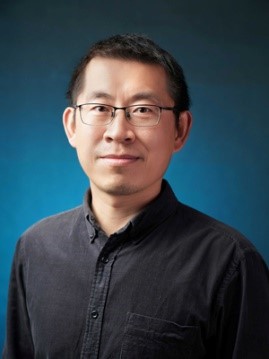
单体锋,男,1981年出生,中国科学院海洋研究所研究员、博士生导师、汇泉学者,国家藻类产业技术体系首席秘书。2009年在中国科学院海洋研究所获得博士学位。主要从事大型海藻育种和群体遗传学研究。主持国家自然科学基金面上项目2项,青年基金项目、国家重点研发计划子任务及中韩青年科学家交流计划项目各1项。在J Phycol, Eur J Phycol, BMC Genomics, J Appl Phycol, Phycol Res, Frontiers in Marine Sciences, Frontiers in Genetics等期刊以第一或通讯作者身份发表SCI论文33篇(第一作者23篇,通讯作者10篇)。参与编写专著1部,授权国家发明专利3项。作为主要完成人之一培育国家水产新品种4个(海带、裙带菜各2个),获国家海洋局海洋科技奖二等奖、海洋创新成果奖二等奖、大连市科技进步奖二等奖各1项。
一、研究领域
大型海藻育种及群体遗传学
二、招生专业及方向
1.海洋生物学,繁殖、发育与调控技术方向
2. 生物与医药,海洋生物工程方向
三、研究室及联系方式
实验海洋生物学重点实验室
联系方式:邮箱:shantifeng@qdio.ac.cn;电话:0532-82893661
四、承担的主要科研项目
(1)国家自然科学基金面上项目“基于群体基因组学的我国裙带菜群体的遗传多样性与局域适应性进化研究”,2022-2025年,负责人
(2)中韩青年科学家交流计划项目,2023年,负责人
(3)国家自然科学基金面上项目“裙带菜永久F2群体的构建与多环境下主要数量性状的QTL定位研究”,2017-2020年,负责人
(4)国家重点研发计划项目“海上放射性事件跟踪监测与应急处置技术和装备研究”,课题7“污染扩散区低浓度核素环境修复技术研究”,子任务“污染扩散区低浓度核素生物修复”, 2016-2020年,负责人
(5)国家自然科学基金青年基金“裙带菜高密度遗传连锁图谱的构建与性别决定位点的定位”,2013-2015年,负责人
(6)中国科学院海洋研究所 汇泉学者人才项目,2018-2020年
(7)中国科学院战略生物资源能力建设项目“海带目褐藻种质的高通量分离、纯系培养及产业化利用技术研究”,2020-2021年,负责人
五、研究成果及奖励
(1) 4个国审新品种:海带“中宝1号”(第2完成人)、海带“205”(第3完成人)、裙带菜“海宝1号”(第2完成人)和“海宝2号”(第4完成人)
(2)“裙带菜新品种培育及健康养殖技术集成与示范”,大连市,科学技术进步奖,二等奖,2018年,排名第五。
(3) “黄海绿潮浒苔溯源及爆发机制研究”,国家海洋局,海洋科学技术奖,二等奖,2013年,排名第四。
(4) “经济海藻羊栖菜苗种工程”,国家海洋局,海洋创新成果奖,二等奖,2011年,排名第六。
六、代表性论文
(1) Shan T, Pang S, Li Y, Schiller J, Lackschewitz D, Bischof K (2023) Comparison of mitochondrial DNA sequences points to the European populations as the direct origin of Undaria pinnatifida that has spread to the northern Wadden Sea. Aquat Bot 188: 103671
(2) Shan T, Li Y, Pang S (2023) A newly discovered subtidal population of Undaria pinnatifida was determined not to be founded recently by the zoospores discharged from a nearby hatchery. J Appl Phycol 35:1957–1965
(3) Shan T, Li Y, Pang S. (2023) Identification of a genomic region linked with sex determination of Undaria pinnatifida (Alariaceae) through genomic resequencing and genetic linkage analyses of a segregating gametophyte family. Journal of Phycology 59:193-203
(4) Shan T, Li Y, Pang S. (2022) Genetic diversity of Undaria pinnatifida populations from China and their genetic relationship with those from Japan and Korea as revealed by mitochondrial and nuclear DNA sequences. Botanica Marina 65(3): 185–195
(5) Shan T, Pang S, Wang X, Li J (2021) The inheritable characteristics of monoicy and parthenogenesis provide a means for establishing a doubled haploid population in the economically important brown alga Undaria pinnatifida (Laminariales, Alariaceae). Journal of Phycology 57:1026-1034.
(6) Shan T, Pang S (2021) Breeding in the Economically Important Brown Alga Undaria pinnatifida: A Concise Review and Future Prospects. Front. Genet. 12:801937
(7) Shan T, Pang S, Wang X, Li J, Li Q, Su L, Li X (2020) A method to establish an “immortalized F2” sporophyte population in the economic brown alga Undaria pinnatifida (Laminariales: Alariaceae). Journal of Phycology 56:1748–1753.
(8) Shan T, Yuan J, Su L, Li J, Leng X, Zhang Y, Gao H, Pang S (2020) First Genome of the Brown Alga Undaria pinnatifida: Chromosome-Level Assembly Using PacBio and Hi-C Technologies. Frontiers in Genetics 11:140.
(9) Shan T, Li Q, Wang X, Pang S (2020) Full-length transcriptome sequencing and comparative transcriptomic analysis of different developmental stages of the sporophyll in Undaria pinnatifida (Laminariales: Alariaceae). J Appl Phycol. 32:2081-2092
(10) Shan T, Li Q, Wang X, Su L, Pang S (2019) Assessment of the genetic connectivity between farmed populations on a typical kelp farm and adjacent spontaneous populations of Saccharina japonica (Phaeophyceae, Laminariales) in China. Frontiers in Marine Science 6:494
(11) Shan TF, Pang SJ, Wang XM, Li J, Su L, Schiller J, Lackschewitz D, Hall- Spencer JM, Bischof K (2019) Genetic analysis of a recently established Undaria pinnatifida (Laminariales: Alariaceae) population in the northern Wadden Sea reveals close proximity between drifting thalli and the attached population. Eur J Phycol 54 (2):154-161.
(12) Shan T, Pang S, Wang X, Li J, Su L (2018) Assessment of the genetic connectivity between farmed and wild populations of Undaria pinnatifida (Phaeophyceae) in a representative traditional farming region of China by using newly developed microsatellite markers. J Appl Phycol 30 (4):2707-2714.
(13) Shan T, Yotsukura N, Pang S (2017) Novel implications on the genetic structure of representative populations of Saccharina japonica (Phaeophyceae) in the Northwest Pacific as revealed by highly polymorphic microsatellite markers. J Appl Phycol 29:631–638
(14) Shan TF, Pang SJ, Li J, Gao SQ (2016) Breeding of an elite cultivar Haibao No. 1 of Undaria pinnatifida (Phaeophyceae) through gametophyte clone crossing and consecutive selection. J Appl Phycol 28:2419–2426
(15) Shan T, Pang S, Li J, Li X, Su L (2015) Construction of a high-density genetic map and mapping of a sex-linked locus for the brown alga Undaria pinnatifida (Phaeophyceae) based on large scale marker development by specific length amplified fragment (SLAF) sequencing. BMC Genomics 16:902.
 鲁公网安备37020202001323号
鲁公网安备37020202001323号 